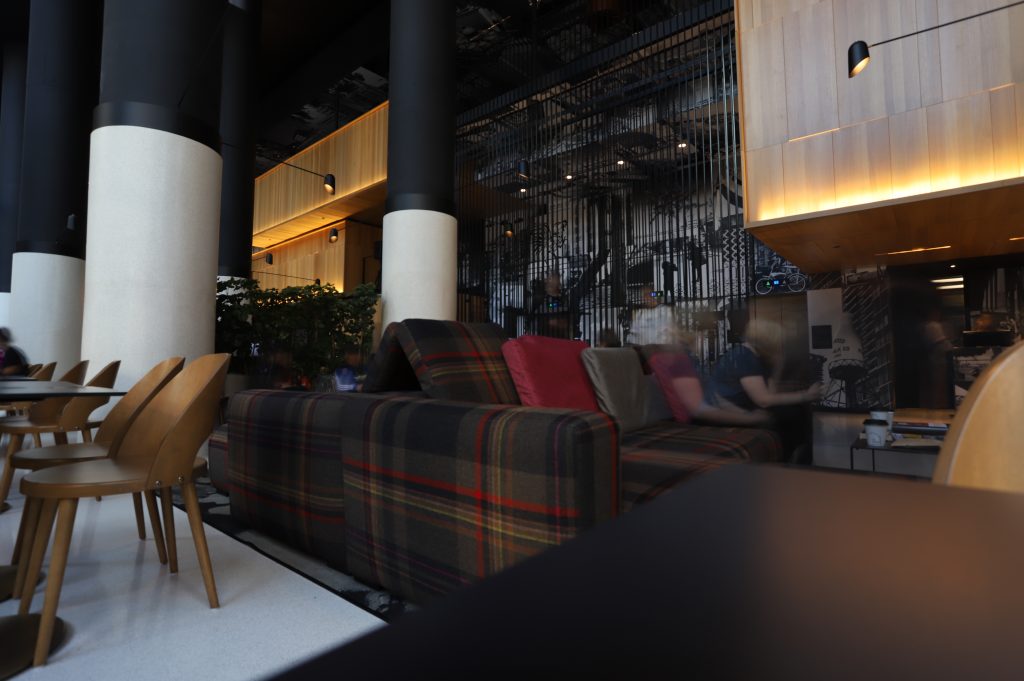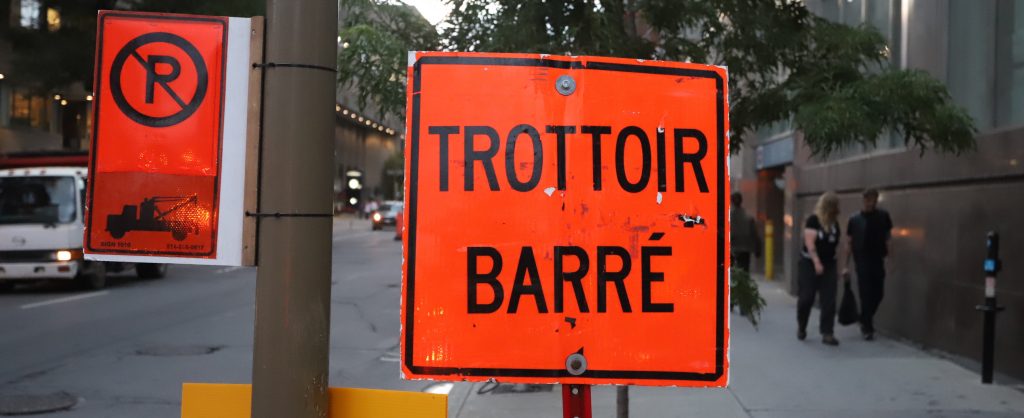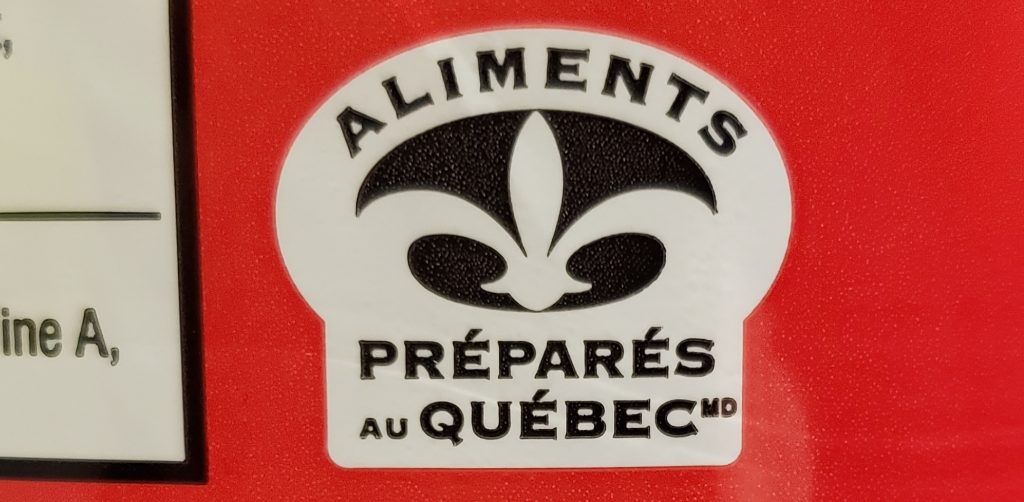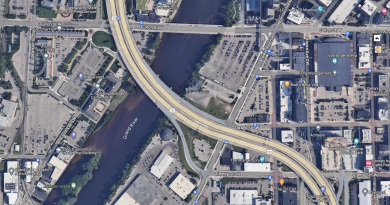Canada Trip II – Montréal and Language
I arrived punctually in Montreal, relatively un-traumatized from a twelve hour train trip. I fell asleep for a power nap while listening to my audiobook on the birth of gangsta rap (highly recommended, by the way), checked into my improbably fancy hotel, and began promptly looking for food, having eaten nothing all day.
On the walk to the hotel, I found myself grinning at the novelty of again being in a place with a different language, mostly because I’m a language nerd, but also because I was punchy from sitting for 12 hours and getting up at 4am to get the train. The hotel was located on the edge of downtown, if you define downtown by large buildings. It is an ultramodern high rise with sweeping, golden wood, expansive surfaces of white, and floor-to-ceiling windows. I wasn’t sure, but I had this idea that they called it Monville as a play on “Ma Ville,” which would be “my city.”
Monville has a robot that delivers room service, and a self-serve check-in. Hospitality in the age of automation– what a time to be alive!

My first language experience after arriving involved asking the concierge for directions:
“Ah, ok… you go right out here onto this major street…”
“René Lévesque,” I said in affirmation, pronouncing the “esk” and positively proud of my geographic knowledge. Of course I knew about René Lévesque, the great Québécois nationalist who led the charge to Frenchify the province through a failed 1978 referendum on independence and a successful, 1977 French language law, the Charte de la langue française. (Shart of the French Language? Something like that, I think.)
“Le-VAICK, oui,” the concierge replied, drawing out the ‘ai’. Normally, it would be pronounced “ehsk,” but in Québécois, it’s more like “aick.” The ‘s’ has been dropped entirely. Where the hell did the ‘s’ go?
“Pourquoi ‘aick’ et pas ‘esque’?” I asked, and he shrugged with a grin, but I suspect he appreciated me at least trying.
Québécois: 1. Me: 0.
There are plenty of examples of how Québécois French can flummox a fluent French speaker. As the descendent of a mother tongue connected through centuries of trade but separated by a giant ocean and extreme sociopolitical distinctions, Québécois retains the fundamentals of métropolitaine French, but with unique vocabulary usage– and incorrigible slang. The liberal use of contractions expresses a Québécois impatience that would make their southern neighbors in the states proud, for example, “faque…” which means, “ça fait que…” or “so, that means,” or “therefore…”
Some words are a product of Québec’s heritage– for example, the specific use of embarquer or débarquer (to get on or get off, which would use different words in Old World French depending on the vehicle) as a product of Québec’s maritime heritage. Others are anglicised French words, English loan words, or, on occasion, words adopted from First Nations languages, as we have in English. The Québécois use of the word “char” for “car” is a pretty egregious anglicisation that makes French people chuckle. But then again, they say ‘voiture,’ which bears no resemblance to ‘automobile.’ The verb ‘magasiner’, that is, to go shopping, does not exist in Metropolitan French. Rather, in Québécois, it is simply a verbization (is that a word?) of ‘magasin,’ or, ‘store’.
This page has an example of how a Québécois man said, “M’as checker ça à soir,” instead of the expected, “Je vais vérifier ça ce soir.” Je m’en vas becomes, simply, m’as. (Remember that the French, in a quest to preserve the purity of their native tongue, abhore imported words, which is why you verifier les couriels on an ordinateur instead of checker des e-mails on your computer.)
And if contractions aren’t confusing enough, some words, too, are just, well, weird:
Enweille (or “enweye”) is a common phrase heard in Montréal. It might be shouted by a cyclist to a driver, or by someone hurrying their kids across the street. The word actually comes from “envoyer,” which means “to send,” but has made its way into the Québécois lexicon as “enweille.” (In Detroit, similarly, some of us say “yalla,” from the Arabic.)
Québécois profanity specifically derives predominantly from the province’s strong Catholic heritage. While the province liberalized substantially in the latter part of the 20th century, eschewing religion in the public sphere (as we all do in late capitalism), it is permanently engrained in the language in the form of many an exclamation. J’m’en calisse, or j’m’en sacre, “I chalice myself” or “I sacrament myself,” meaning, “I don’t give a damn.” Also common is “tabarnak” (“tabernacle”) as an interjection, often translated as “Fuck!”
The ability to construct compound, Catholic profanities is a singular function of Québécois and something to be cherished. A national treasure!
As citizens of an independent nation largely coterminous with its Canadian province, the Québécois also retain strong pride in their language. It may well be in the French DNA. While many countries will offer pictograms as signage, Québec proudly displays many signs in only French. Of course, because it’s North America, most of these are easy enough to figure out. If you don’t speak a word of French, though, you can still piece it together.

To me, language is a lot like a puzzle that shows you the configuration of the world around you. When you discover the meaning of one word, it illuminates connections to other words, and thus begins a whole process of discovery. I think of it as a sensory adventure, as well. Language is something you hear and see, but it also involves an element of tactility. When I’m learning a new language, I find myself going over words over and over again in my mouth, as though tasting some new, exotic food. Probably why I have a good ear and also can make a bunch of sounds with my mouth and repeat things, even if I don’t understand what I’m saying. It’s a certain kind of motor skill that has to be developed, and it also is good for your brain as a matter of challenge.

In many cases, it’s possible to deduce the meaning of a word from context. In other cases, it is possible to figure it out by way of finding a “close enough” cognate. As in the example above of Trottoir barré, it isn’t hard to understand context clues when a sidewalk is closed off with this sign. But it is instructive– at least if you want to be a bona fide language nerd- to make the connection between trottoir and trot, and between barré and barred. The Québécois call potato chips croustilles, which one might almost-translate as crusties. (The French, interestingly, do not use the word croustille.)

The excitement, of course– to me, certainly, as an unapologetic language nerd- is the ability to delve into this foreign language and culture within the familiarity of a North American one. Street grids are similar, infrastructure is similar, commerce is similar, leading to an easier starting point for figuring out one’s way around a city and a language.


